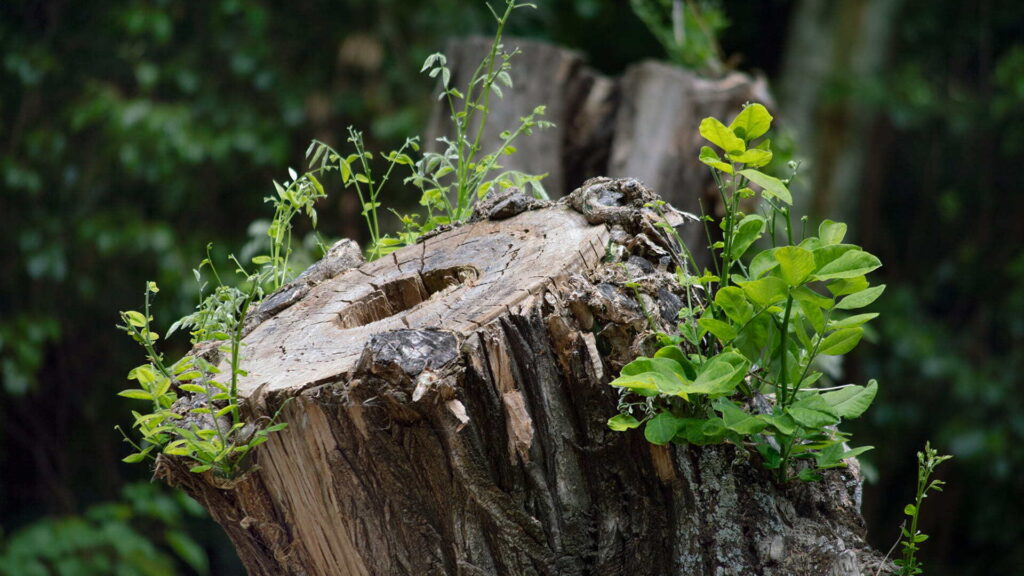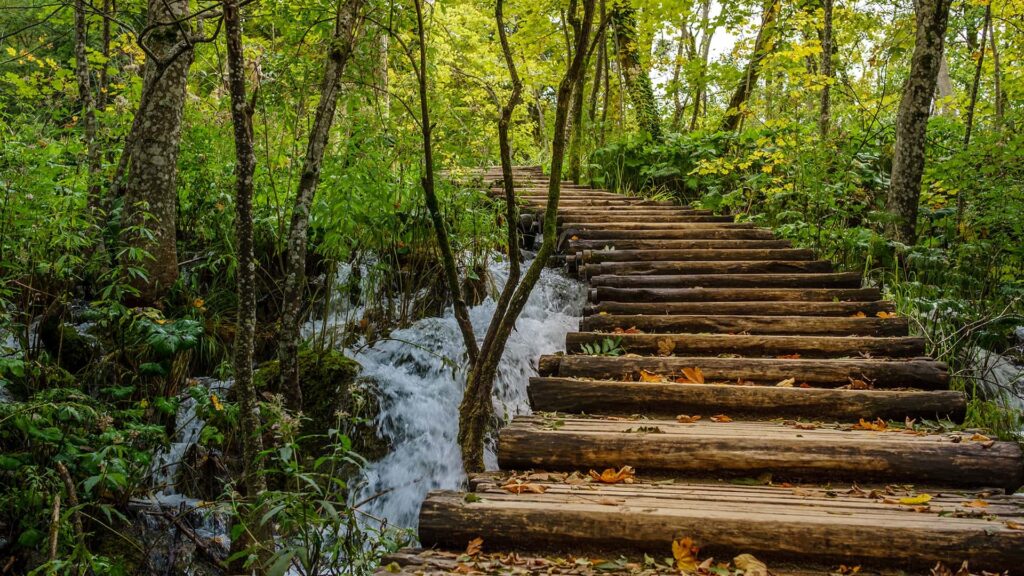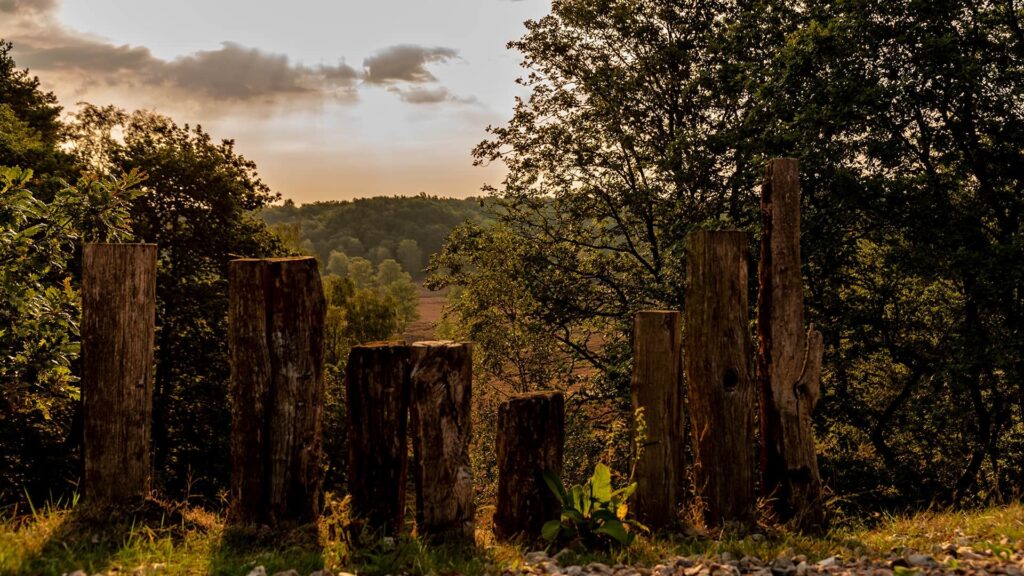Shinrin-yoku, or forest bathing, is a Japanese technique that essentially involves slowing down and absorbing the environment of a forest through your senses of sight, sound, smell, touch, and even taste to promote your physical and emotional well-being. The concept of forest bathing in Japan centers on relaxation and mindfulness.
Without the need for special tools or training, you can naturally lower stress hormones, improve your mood, sharpen your focus, and fortify your immune system by taking a mindful walk or sitting among trees and gently focusing on the sights of sunlight on leaves, the sound of birdsong, the smell1 of pine or damp earth, and the feel of a breeze on your skin.
Imagine a serene moment of entering a sun-dappled forest on a bright summer morning, which is like traveling to a different planet of peace.
Shinrin-yoku is all about the natural vibes, it is so refreshing and has the best impact on a person’s wellbeing. Birdsong and the soft rustle of leaves fill the fragrant, cold air. The concerns that remain in the city soon start to lessen.
“When I am walking on my favorite trail, I am relaxed, upright,” according to one forest treatment guide. As I move, my body feels calm, relaxed, and at ease. There are obvious indications that the tension is easing as she recalls how her “chest is open, arms swinging by my side… smelling the earth deeply.” It seems like stress is being subtly removed by the forest itself at that precise moment.

Autumnal golden alpine woodland where sunshine rivers through the trees and encourages peaceful, contemplative walking. Shinrin-yoku, which translates to “forest bathing” in Japanese, encourages us to take our time and engage our senses. Immersion is more important than exercise. Forest bathing “is simply being in nature, connecting with it through our senses of sight, hearing, taste, smell, and touch,” according to Dr. Qing Li, a pioneer of “forest medicine.”
What seems natural is supported by modern science: spending even a short time in the woods can alter our mood. A 2019 study, for instance, discovered that even a 15-minute walk in a forest considerably reduced tension and anxiety. That straightforward proof supports our observations that spending some time in the company of trees can help one’s mind feel refreshed.
Forest bathing began as a national effort. In 1982, Japan’s Forestry Agency started a nationwide Shinrin-yoku program in response to an increase in worker stress and “karoshi” (death by overwork) occurrences. Since forests comprise over 67% of Japan, the practice was readily available. According to polls, more than 25% of Japanese people reported having already participated in a guided woodland bath by 2003.
The concept swiftly gained international traction, but its foundations are firmly Japanese: woods have long been revered in religions like Buddhism and Shinto. Tree spirits, or Kodama, are even thought to be keeping watch over the forests in Japanese folklore. Shinrin-yoku was essentially a contemporary term for an old mindset: slow down, awaken your senses, and let nature calm you.
Shinrin-yoku: The Science Behind the Calm

The benefits of forest bathing in Japan or generally have been supported by an increasing amount of research. Numerous studies now consistently prove that being in forests causes physiological changes in people.
One Japanese study, for instance, discovered that office workers’ blood pressure, cortisol (a stress hormone), and pulse rate were significantly lower after walking in a forest than after walking in a city. The forest group in that study even displayed a drop in sympathetic activity (the “fight or flight” system) and an increase in parasympathetic activity (the “rest and digest” system). A two-day forest engagement was also found to significantly lower salivary cortisol and enhance heart-rate variability, a measure of relaxation, according to a 2024 clinical investigation. To put it briefly, being in a forest helps us relax.
By encouraging us to take deep breaths and take in the life around us, gazing up at the sky through a forest canopy may be a meditative experience in and of itself. Not all of these changes are related to blood pressure. Shinrin-yoku or Forest bathing significantly improved stress management at a physiological level according to an expanding assessment of studies.
Forest walks were found to boost cardiovascular and immunological function as well as “enhancing people’s emotional state… and obvious alleviation of anxiety and depression,” according to another thorough investigation. Forests help in our recovery from stress and trauma by reducing our adrenaline and cortisol levels and alleviating symptoms of anxiety and depression according to Eco therapist Blake Ellis of the US Forest Service. Additionally, she points out that taking a forest bath “improves our immune system, mood, attention, creativity, and sleep quality, as well as cardiovascular and respiratory function and lowers blood pressure.”
Furthermore, researchers studying mindfulness identify a straightforward mechanism: being in a forest engages all of our senses and brings the mind into the present.

Dr. Susan Albers, a psychologist, notes that “forest therapy engages multiple senses.” “Our brains stop anticipating, recalling, pondering, and worrying because the sights, sounds, and smells of the forest transport us directly into [the] moment.” A mindful walk in the woods can indeed lift your spirits more than a stroll in the city. Spending time in nature, for instance, has been demonstrated to improve focus and attention. In one study, children who struggled with attention showed a significant reduction in symptoms following a brief walk among trees. According to cardiothoracic anesthesiologist Dr. Rosanne Sheinberg:
It has been verified that taking a forest bath improves blood pressure, heart rate, and the nervous system and those advantages spread throughout the entire body because our mental health influences the immune system.
Nonetheless, simply listening to nature tends to settle us down. According to a UK study, compared to silence or a meditation app, one minute of forest sounds—such as birds chirping, leaves rustling, or a stream flowing—made respondents 30% more relaxed, 25% less tense, and 20% less anxious.
In conclusion, woods offer a symphony of positive stimuli, such as clean oxygen, phytoncides, and calming visual patterns, which, when combined with careful attention, calm our nervous systems and improve our mood.
Stories from the Woods

Forest bathing or Shinrin-yoku is quite personal to many people and goes beyond simple philosophy. After a walk in the woods, parents, therapists, and healthcare professionals often report experiencing significant changes. In stark contrast to the stress of her workday, she observes that even a “slight smile” emerges when she breathes in the aroma of moist earth and hears birdsong. “In every walk with nature one receives far more than he seeks,” as naturalist John Muir stated it simply. That is true for many people.
People who suffer from anxiety say that being in a peaceful forest ultimately causes their racing thoughts to slow down. After spending time under trees, children who are irritable or distracted tend to become quiet and concentrated.
This is supported by research, which shows that even a little walk in the forest can significantly lower anxiety levels. Guided woodland walks have helped veterans and trauma survivors regain trust in their environment and reduce PTSD symptoms.

Anesthesiologist Dr. Rosanne Sheinberg is among the numerous medical professionals who now “prescribe” time spent in nature. She reminds us that mental health is linked to all bodily systems, pointing out that forest bathing or Shinrin-yoku “has been shown to benefit the nervous system, heart rate, and blood pressure.” Dr. Leela Magavi, a psychiatrist, also notes that spending time in nature can promote creativity and learning.
Spending time outdoors with friends or a caregiver, she claims, “may promote neuronal connectivity and enhance cognition, productivity, and academic performance.” In addition to improving their ability to concentrate, kids who engage in mindfulness exercises in the woods create wholesome memories and strengthen relationships with others.
These practical experiences highlight that Shinrin-yoku is an easy-to-use tool. It can be “the needed antidote to too much screen time and stress,” as one guide notes, which is just the wellness boost that many of us need in this day and age.
Shinrin-yoku: How to try a Forest Bath this Summertime?

To attempt forest bathing or Shinrin-yoku, all you need is a patch of greenery and an open mind; no deep wilderness or specialized equipment is required. Any natural area can be used, whether it’s your backyard, a communal garden, a riverbank route, or a metropolitan park with big trees. Slowing down and practicing mindfulness are crucial. Experts advise unplugging and focusing on each sensation individually: take deep breaths, walk or sit quietly, and genuinely look, listen, smell, and touch. Here are some pointers for beginners:
Select the ideal location and time: Pick a quiet area free of crowds. There are frequently fewer people and more wildlife sounds in the early morning or evening. If it feels soothing, even a little walk down a street lined with trees can qualify.
Distractions should be turned off. Turn off your phone or put it away. The purpose of forest bathing or Shinrin-yoku, sometimes known as a digital detox, is to disconnect from technology and focus entirely on the present.
While walking or sitting, practice mindfulness by moving slowly and without a set goal in mind. While some recommendations advise starting in 10 to 15 minutes, others advise starting in as little as two hours if you have the time.

However, even a 20-minute forest session has advantages: “Just 20 minutes a day outside can lead to increased well-being and happiness – and less stress,” according to Kaiser Permanente. Allow your curiosity to lead you whether you walk or remain stationary; stop when something captures your attention or appeals to you.
Make use of all your senses: Pay attention to each sensation independently. Touch a tree’s rough bark. Inhale the scent of the fresh air or wildflowers. If it’s safe, touch the soft moss or the cool stream water. Pay special attention to the wind, birds, or flowing water. Look at how the light flows through the leaves. The sensation can be enhanced even by cautiously sampling the sweetness of fresh air or a wild berry.
Breathe deeply and slowly through your nose and out your mouth a few times to help you relax. Breathe in the earthy aromas surrounding you. As with any meditation, deep breathing helps you relax by stimulating your parasympathetic nervous system.
Be careful: Wear sturdy shoes and dress appropriately for the weather. If you’re unfamiliar to the outdoors, stay on designated trails or open spaces. If necessary, bring water and bug repellent or sunscreen. Telling someone about your goal or bringing a companion is a good idea, especially in more isolated locations.
Comfort and safety allow you to fully relax and savor the moment. This is one of the most important things to consider. Don’t go too far or isolate. Just be safe and be where there is extreme safety. Trees and some nature are all you need that can be found nearby and gain be safe and safety is utmost important.
Encourage awe and mindfulness of the here and now: What matters most is the aim. Forest bathing, or Shinrin-yoku, is about living completely in the present.

Take on the curiosity of a child. Seek out breathtaking views, such as a twisted old tree, a butterfly flitting by, or a pattern of sunshine on leaves. (At the end, spend some time thinking about how you feel now versus how you felt before. Just pay attention; no judgment is required.
Above all, keep in mind that there is no one “correct” approach to taking a Shinrin-yoku. A qualified leader can lead a guided forest therapeutic walk, or you can go alone and just be but keep safety in mind. Rain or sunny, any season will work. Bring your thoughts back to the sights and sounds if they stray. On a hectic day, even five minutes is helpful. Presence, not performance, is what matters.
Shinrin-yoku may be one of the simplest health investments you can make because it has virtually no costs or negative effects. This summer, think about making a park trail or tree grove a mental spa. Breathe deeply, approach with interest, and allow yourself to explore at your own pace. You can feel calmer, clearer, and more connected after even a brief walk beside a stream or a quick sit on a rock under a canopy. Ultimately, you could discover that nature is sometimes the finest therapy.
Shinrin-yoku is all about a good experience with safety and again be safe and go for the safest options.








